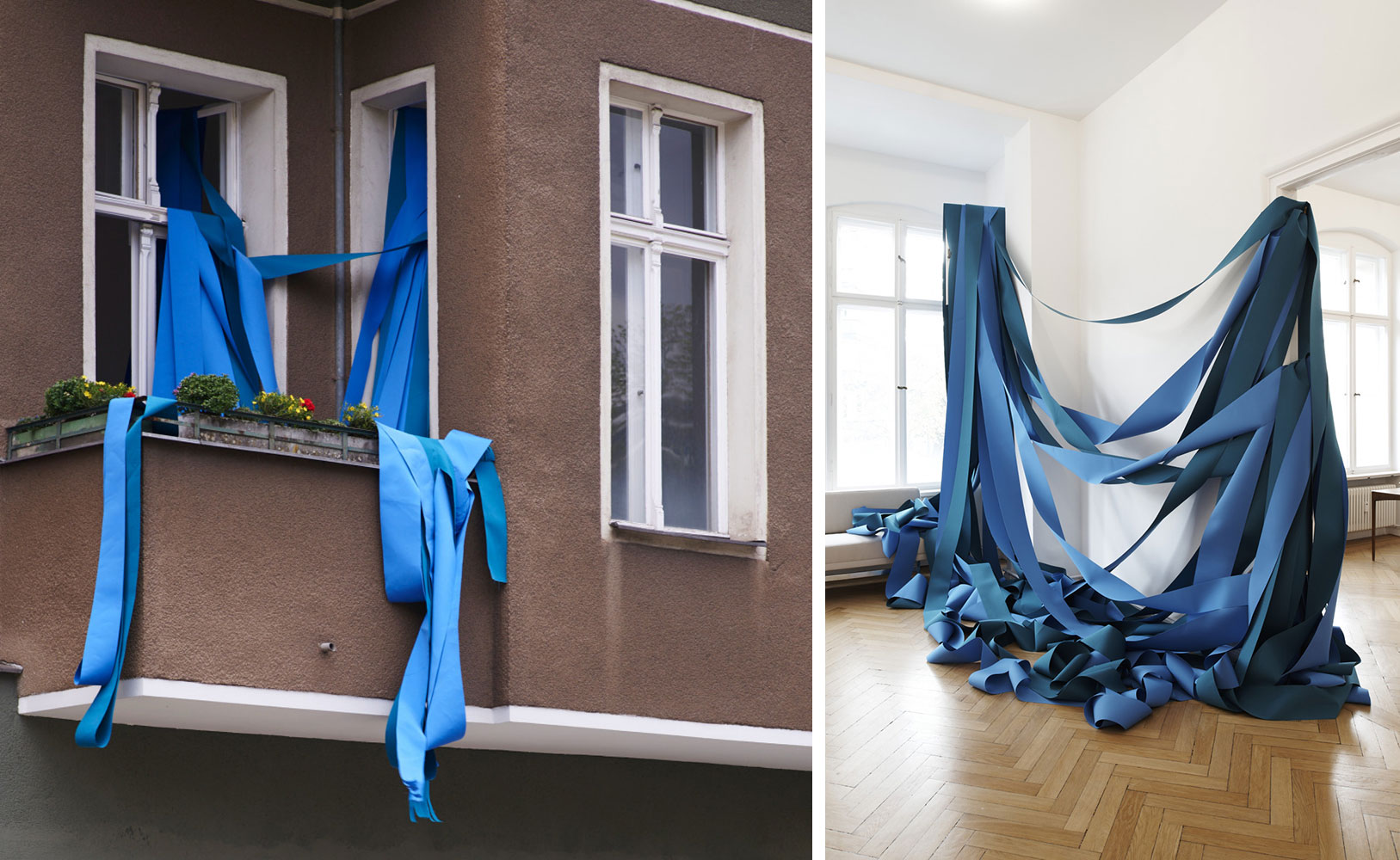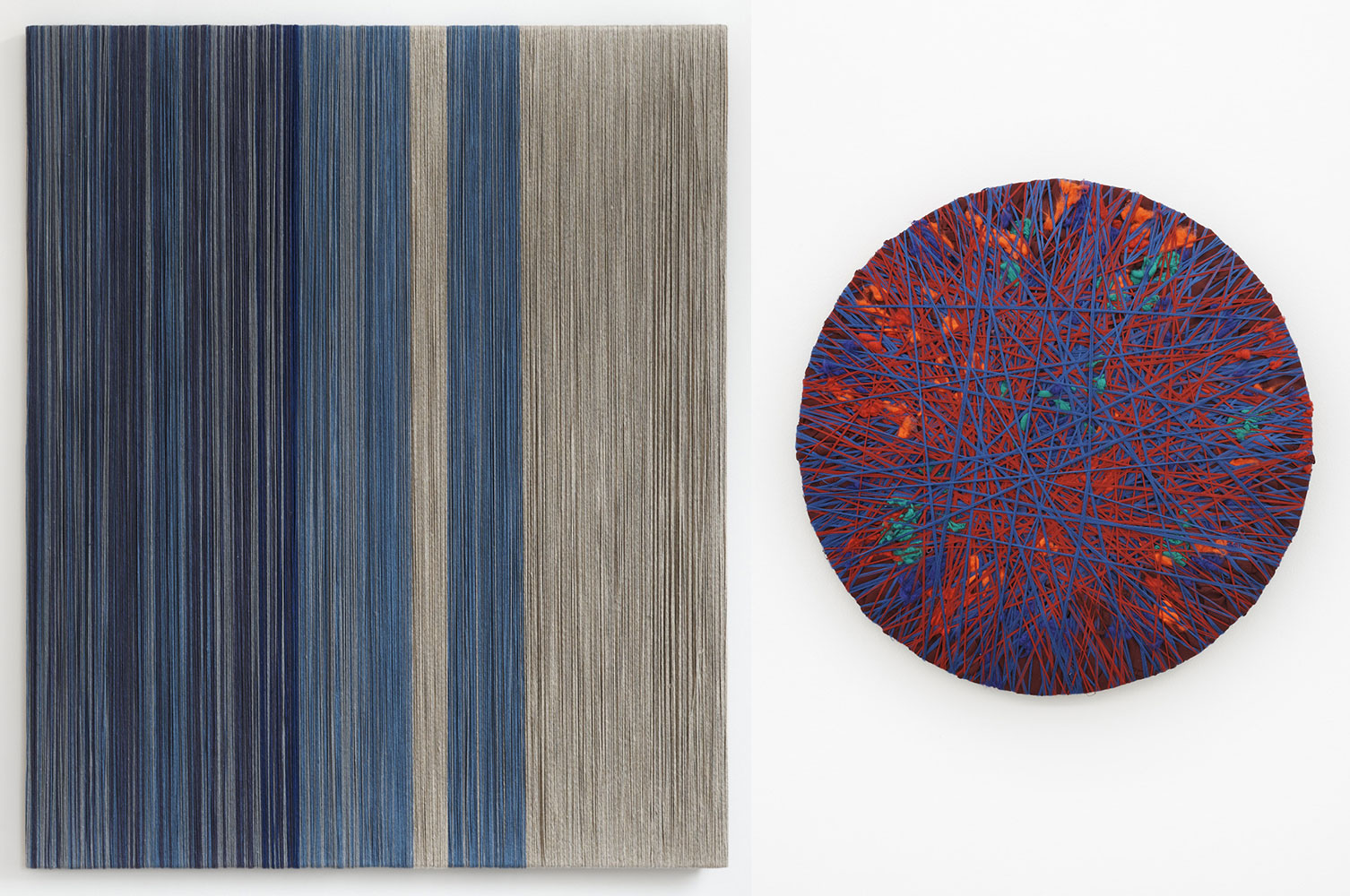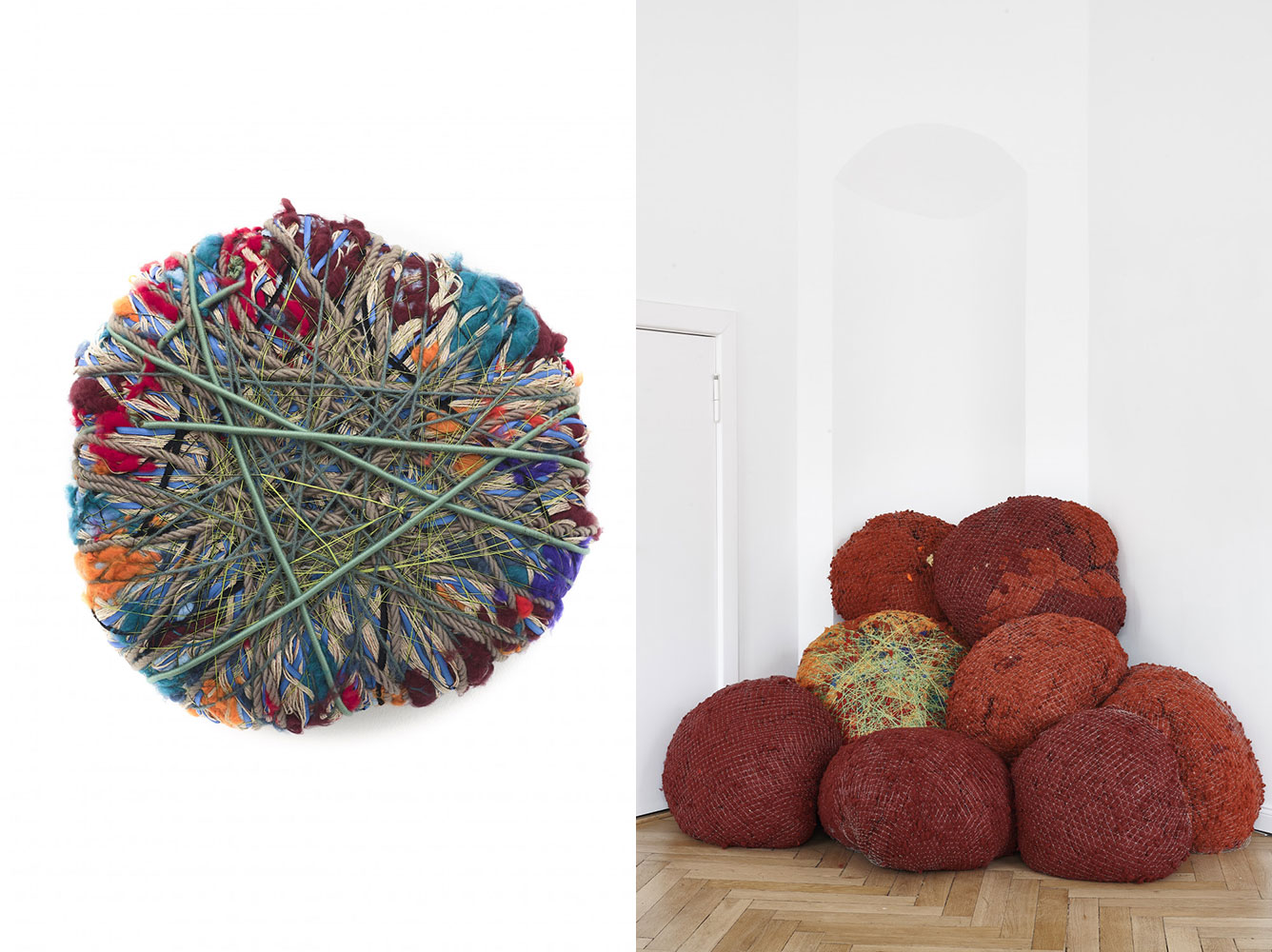PRESENTATION: Sheila Hicks-In Abundance
 Since the late 1950s, Sheila Hicks has been producing work exceptionally difficult to categorise. Knotting, wrapping, folding, twisting and stacking wool, linen and cotton: these are only some of the techniques and materials that have seen her undermine conventional artistic categories and their hierarchical relationships. A pupil of Josef Albers at Yale, Sheila Hicks is the heir to both a Modernist spirit that holds the distinctions between fine art, decoration and design to be unimportant and a textile practice that has its roots in pre-Columbian America.
Since the late 1950s, Sheila Hicks has been producing work exceptionally difficult to categorise. Knotting, wrapping, folding, twisting and stacking wool, linen and cotton: these are only some of the techniques and materials that have seen her undermine conventional artistic categories and their hierarchical relationships. A pupil of Josef Albers at Yale, Sheila Hicks is the heir to both a Modernist spirit that holds the distinctions between fine art, decoration and design to be unimportant and a textile practice that has its roots in pre-Columbian America.
By Efi Michalarou
Photo: Meyer Riegger Gallery Archive
On the occasion of Gallery Weekend Berlin 2023 Sheila Hicks presents, “In Abundance”, her first gallery solo exhibition in Germany in more than 50 years. This long-overdue exhibition aims to place the artist within a German context, offering to the public in Berlin a selection of works that reflect a more-than-half-century-long career. The breadth and diversity of Hicks’s work will be featured, from woven works to knotted pieces. Smaller, intimate, wall-hanging sculptures and vitrines will be on display alongside imposing, large-scale installations. The exhibition is both a survey of an extensive, fascinating body of work and at the same time an insight into the current artistic production of Sheila Hicks, whose creative energy remains unbroken to this day. The American, who has lived in Paris since 1964, works with fibres in breathtaking colous, including wool, linen, silk and pigmented acrylic fibres, which she knots, weaves or spins to create stunning new forms. On one hand, through her painting studies with Bauhaus master Josef Albers at Yale University, the artist is influenced by Modernism. On the other, her work draws on the traditional arts and crafts of various continents, which she became familiar with during longer periods of time spent in Chile, Mexico, India and Morocco, among others. Throughout her career, the 88-year-old artist has fused and repeatedly reworked these multiple threads of influence to create a unique style that continues to captivate audiences. Born in 24/7/1934 in Nebraska, Sheila Hicks studied painting at the Yale School of Arts and Architecture. There, she was strongly influenced by the teaching of textile artist Anni Albers, painter and color theorist Josef Albers, and art historian George Kubler, one of the greatest experts in Pre-Colombian and Ibero-American art, famous for his book “The Shape of Time: Remarks on the History of Things” (1973). Numerous trips to South America (Venezuela, Colombia, Peru, Bolivia, Brazil, etc.) and five years spent in Mexico have fed her curiosity for pre-Colombian textile art; by meeting indigenous weavers and by visiting pre-Inca archeological sites, she discovered many techniques and materials. This is the starting point of a lifelong research on fibers, threads and fabric: Sheila Hicks observes materials, how they move, she dissects their language and creates her own, adding color, which is fundamental in her work. Her work consists mostly in bas-reliefs, tapestries and small and large-scale sculptures. Each one of her interventions, whether indoors or outdoors, involves a reflection and a dialogue with the physical and architectural context of the site. The sculpture and its environment communicate, so much so that she calls her installations “environmental sculptures”. During the second half of the 1960s, going beyond the tapestry model that had hit her to dominated textile work, she created “soft sculptures”, which have become iconic pieces. Piled up pieces of wool and linen that can be reinterpreted at every new showing, they reflected a line of thinking similar to that of contemporary Antiform and post-minimalist artists. In the following decade, she began a series of large soft sculptures made from vibrant lines of fiber, falling from the ceiling and filling the space with colour, they represented one of her major contributions to the art of the 1970s. Sheila Hicks works have also played a historic role in embodying a renewed meeting of haptic and optical perception. Through its malleable nature, textile gives life to works that are no longer bound by a fixed form. Deformable, stretchable and supple, it adapts and transforms, giving fresh vitality in diverse circumstances to every new location and installation. Thus, her installations adapt to their various environments as they play along with the laws of gravity.
Photo: Sheila Hicks, Blue evasion, 2023, synthetic fibers, dimensions variable, © Sheila Hicks, Courtesy the artist and Meyer Riegger Gallery
Info: Meyer Riegger Gallery, Schaperstrasse 14, Berlin, Germany, Duration: 29/4-29/7/2023, Days & Hours: Tue-Sat 11:00-18:00, https://meyer-riegger.de/











